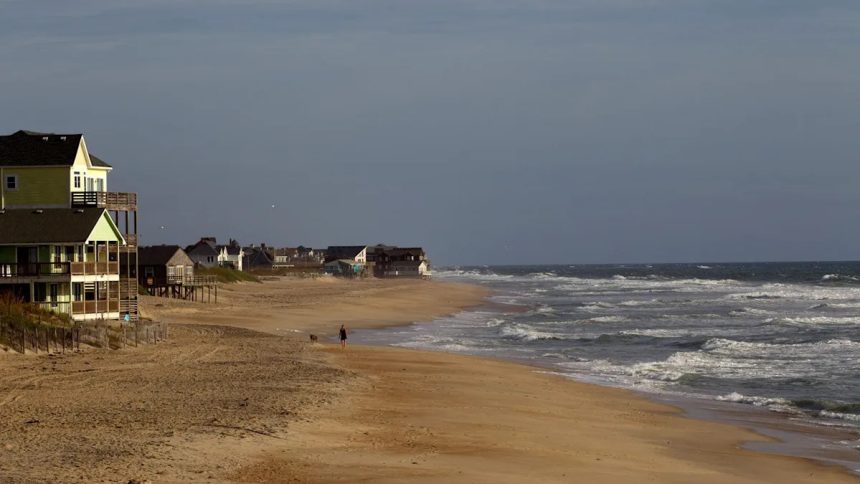Hurricane Erin isn’t expected to directly hit the U.S. East Coast, but by doubling or tripling in size, its impacts threatened the North Carolina Outer Banks, the thin, low stretch of barrier islands off the mainland, that poke far out into the Atlantic Ocean, Dare County emergency officials said as they declared a state of emergency.
They ordered an evacuation of Hatteras Island starting Monday. Several days of heavy surf and high winds and waves could wash out parts of North Carolina Highway 12, which connects the popular vacation spot to the mainland, the National Weather Service said.
The center of the storm is forecast to stay at least 200 miles from the Outer Banks but will also bring rip tides all along the East Coast, officials said.
(MORE: Here’s The Latest On Hurricane Erin)
A woman walks with her dog on a beach
Bermuda could have similar conditions as Erin is forecast to turn to the north and then northeast, forecasters said.
Erin, the first Atlantic hurricane of 2025, reached an exceedingly dangerous Category 5 status Saturday with maximum winds of 160 mph before weakening. The storm’s maximum sustained winds were 125 mph Sunday afternoon, according to the National Hurricane Center in Miami.
The winds decreased as the storm went through internal changes. Erin is expected to remain powerful for the next several days and is expected to strengthen somewhat over the next 48 hours as it grows, forecasters said Sunday afternoon.
“You’re dealing with a major hurricane. The intensity is fluctuating. It’s a dangerous hurricane in any event,” said Richard Pasch of the National Hurricane Center.
(MORE: Track Hurricane Erin With These Maps)
The rain and winds from the outer bands of the storm left about 147,000 customers without power Sunday morning in Puerto Rico, according to Luma Energy, a private company that oversees the transmission and distribution of power on the island. The weather canceled more than 20 flights, officials said.
Swells were also expected to affect portions of the Virgin Islands, Puerto Rico, Hispaniola and the Turks and Caicos Islands during the next couple of days, forecasters said.
The Coast Guard allowed all ports in Puerto Rico and the U.S. Virgin Islands to reopen on Sunday as winds and rains in the area decreased.









